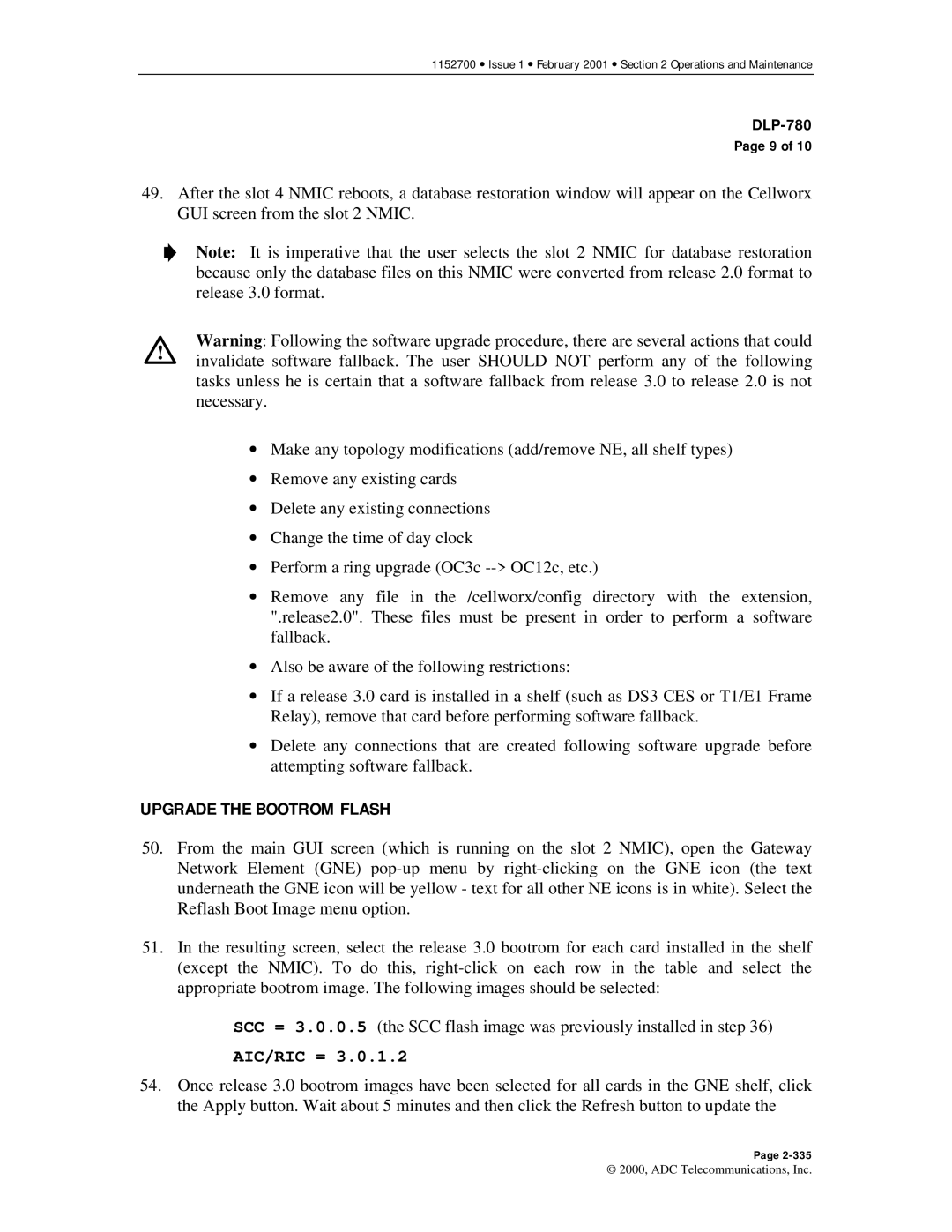
1152700 • Issue 1 • February 2001 • Section 2 Operations and Maintenance
Page 9 of 10
49.After the slot 4 NMIC reboots, a database restoration window will appear on the Cellworx GUI screen from the slot 2 NMIC.
Note: It is imperative that the user selects the slot 2 NMIC for database restoration because only the database files on this NMIC were converted from release 2.0 format to release 3.0 format.
Warning: Following the software upgrade procedure, there are several actions that could invalidate software fallback. The user SHOULD NOT perform any of the following tasks unless he is certain that a software fallback from release 3.0 to release 2.0 is not necessary.
•Make any topology modifications (add/remove NE, all shelf types)
•Remove any existing cards
•Delete any existing connections
•Change the time of day clock
•Perform a ring upgrade (OC3c
•Remove any file in the /cellworx/config directory with the extension, ".release2.0". These files must be present in order to perform a software fallback.
•Also be aware of the following restrictions:
•If a release 3.0 card is installed in a shelf (such as DS3 CES or T1/E1 Frame Relay), remove that card before performing software fallback.
•Delete any connections that are created following software upgrade before attempting software fallback.
UPGRADE THE BOOTROM FLASH
50.From the main GUI screen (which is running on the slot 2 NMIC), open the Gateway Network Element (GNE)
51.In the resulting screen, select the release 3.0 bootrom for each card installed in the shelf (except the NMIC). To do this,
SCC = 3.0.0.5 (the SCC flash image was previously installed in step 36)
AIC/RIC = 3.0.1.2
54.Once release 3.0 bootrom images have been selected for all cards in the GNE shelf, click the Apply button. Wait about 5 minutes and then click the Refresh button to update the
Page
© 2000, ADC Telecommunications, Inc.
